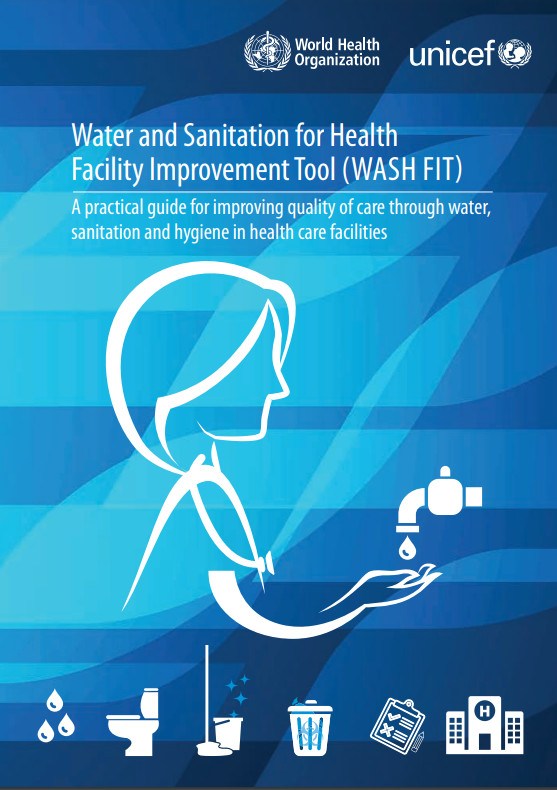Water and Sanitation for Health Facility Improvement Tool (WASH FIT)
 |
A practical guide for improving quality of care through water, sanitation and hygiene in health care facilities
guide Apr 2018 ; 92 pages
Ed. UNICEF - New York WHO - Genève ; Isbn: 978-92-4-151169-8
Téléchargeable sous format: PdF
Téléchargeable chez l'éditeur
Abstract:
WASH FIT is a risk-based approach for improving and sustaining water, sanitation and hygiene and health care waste management infrastructure and services in health care facilities in low- and middle-income countries (LMIC). WASH FIT is an improvement tool to be used on a continuous and regular basis, to first and foremost help health care facility staff and administrators prioritize and improve services, and, second, to inform broader district, regional and national efforts to improve quality health care.
The WASH FIT guide contains practical step-by-step directions and tools for assessing and improving services. It is adapted from the water safety plan (WSP) approach recommended in the WHO Guidelines for drinking-water quality (WHO, 2011) and goes beyond water safety to include sanitation and hygiene, health care waste, management and sta empowerment. Contents:
I. Introduction . 1
Why focus on WASH in health care facilties? . 1
2. Overview of WASH FIT . 3
Why use WASH FIT? . 3
Who should use WASH FIT?. 4
What areas of a facility does WASH FIT cover? . 4
In what type of facilities should WASH FIT be used?. 5
How can WASH FIT be adapted for other types of facilities and settings? . 5
What role does leadership play in WASH FIT . 6
3. The WASH FIT process . 7
Task 1: Assemble a WASH FIT team and hold regular meetings. 9
Task 2: Conduct an assessment of the facility. 13
Task 3: Undertake hazard and risk assessment. 18
Task 4: Develop an improvement plan. 24
Task 5: Monitor the progress of the improvement plan and make revisions as necessary . 26
4. References . 28
5. Tool templates . 31
Tool 1A: WASH FIT team list. 32
Tool 1B: WASH FIT team meeting record sheet. 33
Tool 2A: Indicators assessment . 35
Tool 2B: Record of assessment . 53
Tool 2C: Sanitary inspection forms . 55
Sanitary inspection form 1: Dug well with hand pump. 55
Sanitary inspection form 2: Deep borehole with motorized pump . 57
Sanitary inspection form 3: Public/yard taps and piped distribution. 58
Sanitary inspection form 4: Rainwater harvesting . 60
Sanitary inspection form 5: Storage reservoirs. 61
Tool 3: Risk assessment. 63
Tool 4: Improvement plan. 67
Annex 1: Guidance for national or district level implementers and policymakers . 69
WASH FIT external follow-up visit questionnaire . 72
Activity planning example . 77
Editeurs/Diffuseurs: |
|
UNICEF - New York - Etats Unis |
WHO
-
World Health Organization - Genève - Suisse |
En cas de lien brisé, nous le mentionner à communication@pseau.org